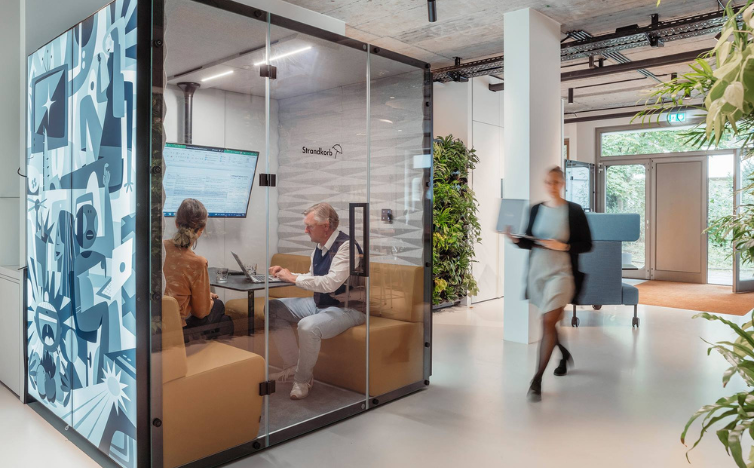Modern workplaces demand spaces that foster collaboration while reducing noise distractions. The choice between acoustic pods vs meeting rooms can significantly impact efficiency, comfort, and cost. This article explores the benefits and drawbacks of each option to help you make an informed decision.
What Are Acoustic Pods?
Acoustic pods are standalone, soundproof structures designed for privacy and focus. These versatile units can accommodate individuals or small groups and are often equipped with ventilation, lighting, and power outlets.

Key Benefits
- Portability: Easily moved or relocated within an office space.
- Noise Reduction: Effectively minimizes external and internal noise.
- Cost-Effective: No construction costs compared to building a meeting room.
- Flexibility: Available in various sizes and designs to suit different needs.
Limitations
- Capacity: Typically supports fewer people than traditional meeting rooms.
- Space Requirements: Can occupy valuable floor space.
- Aesthetics: May not blend seamlessly with all office designs.
See Also: Maximizing Small Office Space with Acoustic Pods
What Are Traditional Meeting Rooms?
Meeting rooms are enclosed spaces designed for group discussions and collaborative work. They are typically built into the office layout and equipped with presentation tools and seating for multiple attendees.
Key Benefits
- Capacity: Accommodates larger groups, making it ideal for team meetings or presentations.
- Permanent Solution: Part of the office’s structural design, providing long-term usability.
- Professional Appearance: Often designed to impress clients and stakeholders.
Limitations
- Costly Installation: Requires significant investment in construction and design.
- Less Flexibility: Cannot be easily relocated or reconfigured.
- Noise Leakage: Poorly designed meeting rooms may not offer adequate soundproofing.
Comparing Acoustic Pods and Meeting Rooms
1. Flexibility and Portability
- Acoustic Pods: Ideal for evolving workspaces; they can be moved or added as needed.
- Meeting Rooms: Fixed and permanent, limiting adaptability.
2. Cost and Installation
- Acoustic Pods: Lower upfront costs and no need for structural modifications.
- Meeting Rooms: High construction costs, including soundproofing and furnishings.
3. Noise Control
- Acoustic Pods: Superior sound isolation due to specialized materials.
- Meeting Rooms: May require additional soundproofing measures for effective noise control.
4. Capacity and Functionality
- Acoustic Pods: Better suited for one-on-one meetings or small group collaborations.
- Meeting Rooms: Designed for larger teams and formal presentations.
5. Aesthetic and Professionalism
- Acoustic Pods: Modern and innovative but may not suit all office styles.
- Meeting Rooms: Classic and professional, fitting traditional office settings.
See Also: Enhancing Workplace Privacy and Focus with Acoustic Pods
Which Option Is Best for Your Needs?
The choice depends on your workspace requirements:
- Choose Acoustic Pods if you prioritize flexibility, cost-effectiveness, and noise control in a dynamic workspace.
- Opt for Meeting Rooms if you need a permanent, professional space for large group activities and client interactions.
Call us: Contact DeSound Soundproofing Expert in Dubai For Soundproofing: +971 56 231 4204
Conclusion
Both acoustic pods and meeting rooms offer unique advantages tailored to different office needs. By evaluating factors like budget, space, and functionality, you can select the solution that best enhances your workplace productivity and comfort.

